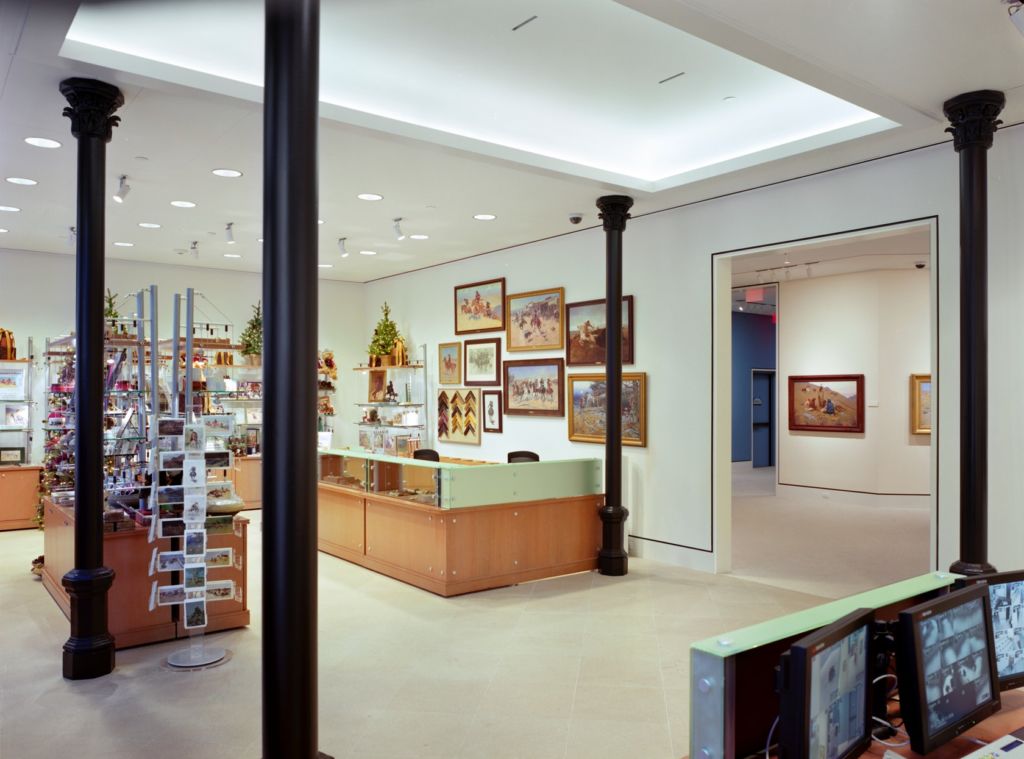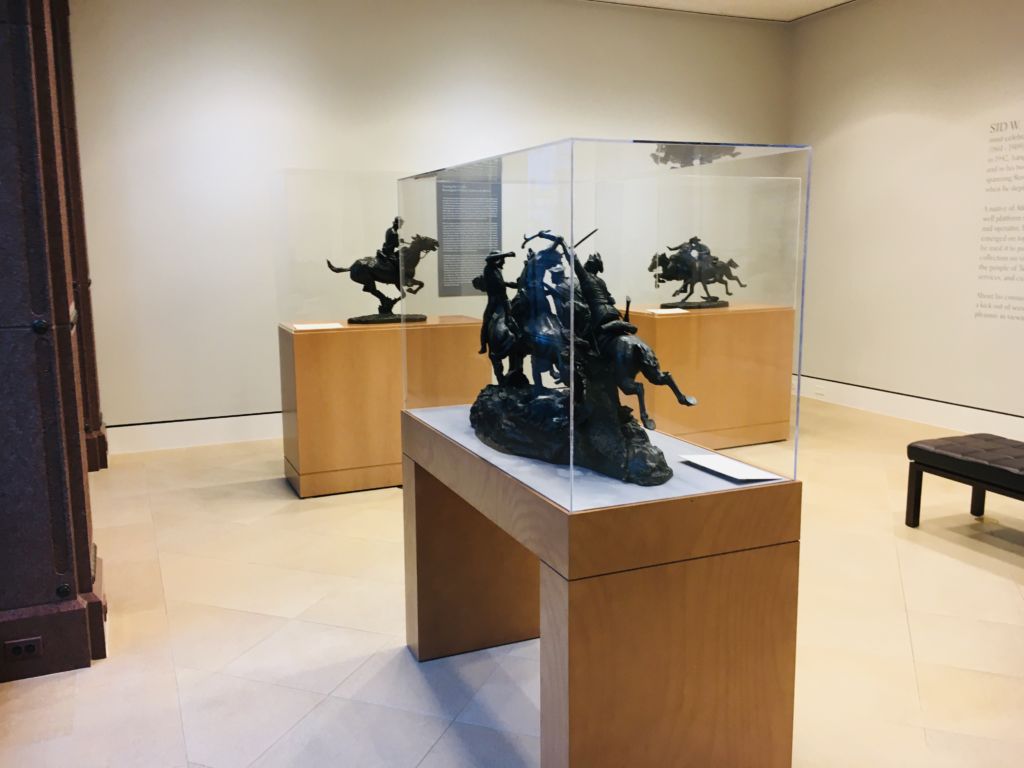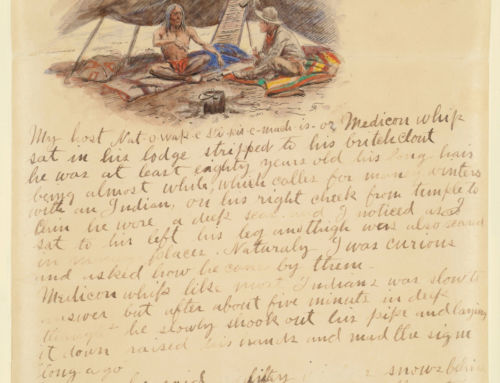If you’ve walked by the museum lately, you may have noticed some changes. The front space of our institution has transformed many times since the museum first opened to the public in 1982.

Interior of Museum Store, 1982

Museum Store interior, post 2006 renovation

Museum Front Gallery, 2020

Museum Front Gallery, 2020
The museum store was leased and operated by local business owner Chris Gensheimer. Given the economic impact on downtown and with the suspension of convention traffic, the decision was made that for the time being retail at The Sid was not sustainable. The former museum store space has been turned into a gallery – a room in which to display art – that will feature Peter Hurd’s portrait of Sid Richardson and an introduction to Sid’s collection. It will also feature a focused exhibition of Remington bronzes on loan from a private collection titled, Casting the Cavalry: Remington’s Military Subjects in Bronze. The installation was designed to complement our current installation of the permanent collection as well as our special exhibition, In a Different Light: Winslow Homer & Frederic Remington.
Casting the Cavalry: Remington’s Military Subjects in Bronze

Installation View

Installation View
The American soldier in the West was a persistent subject in Remington’s art throughout his career. His father’s tales of action during the Civil War inspired a passion for the military and a desire to document the glory and romance of battle. Remington drew from his experiences as a war correspondent in the late 1880s when he was sent west to capture scenes of the cavalry in the American Indian Wars for weekly magazines such as Century and Harper’s Weekly. Of the twenty-two sculptures the artist created over a relatively short, fourteen-year period, the three on view in our front gallery depict the soldiers that Remington observed on the frontier, and celebrated in his writings and art.

Frederic Remington, Dragoons 1850, 1917 (copyrighted 1905), Roman Bronze Works cast #5, Private Collection
With his career as an artist illustrator solidified by the early 1890s, Remington began to realize his painted compositions in three dimensions. He learned the basics of clay modeling from the sculptor Frederick W. Ruckstull in 1895 and produced his first and most popular sculpture, The Broncho Buster, a dynamic depiction of a cowboy breaking a horse. Remington’s second, larger version of The Broncho Buster can be seen on view in the next gallery. The artist’s second subject in bronze, The Wounded Bunkie, depicts a moment of defeat and comradery as the two soldiers ride in retreat from an unseen enemy. It also introduces the dramatic kinetic sculptural effects that Remington would expand upon in the majority of his three-dimensional works. Trooper of the Plains 1868 and Dragoons 1850 are prime examples of the nostalgia for frontier history that Remington was so fond of in his late years.

Frederic Remington, The Wounded Bunkie, 1896 (copyrighted July 9, 1896), Henry-Bonnard Bronze Co. cast letter B, Private Collection

Frederic Remington, Trooper of the Plains 1868, ca.1917-1918 (copyrighted January 13, 1909), Roman Bronze Works cast #8, Private Collection
Remington’s first forays into bronze sculpture were made in partnership with the Henry-Bonnard Bronze Company. These works were made using the sand casting process, which results in smooth clean surfaces, finished in a rich brown patina as seen in The Wounded Bunkie, on view in the front gallery. In 1900, Remington began working with a new foundry, Roman Bronze Works, who employed the lost wax process. This method allowed Remington to further develop and push the boundaries of the material, creating sculptures that appeared to be caught in mid motion, almost freeing them from their base. Trooper of the Plains 1868 and Dragoons 1850 are made using the lost wax, or cire perdue method. We invite you to examine and compare these two processes on view in our front gallery, and consider Remington’s celebrations of the cavalry and his work as a war correspondent in relation to the special exhibition In a Different Light: Winslow Homer & Frederic Remington.






Remington is such a great artist!